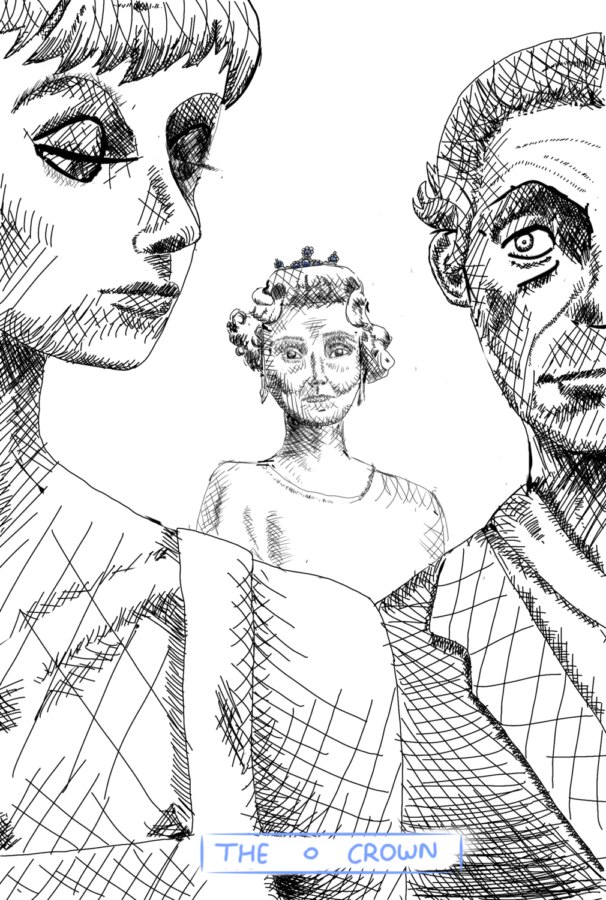“The Crown” is not the same without its Queen
“The Crown” was first released in 2016, and since then continues to be nominated for various awards. But with season five, the previously well-written show filled with history and politics became more like a dramatic soap opera.
December 19, 2022
When creating a piece of art surrounding a real life event, it is imperative that the work deals with the subject in a tactful manner, without over-dramatization. This could not be more true for “The Crown.”
“The Crown” was first released in 2016, and since then continues to be nominated for various awards. The three-time Emmy winning show centers around the English royal family during the reign of Queen Elizabeth II. Over the seasons, it has covered the royal marriage, addressed Princess Margaret’s struggles in being overshadowed by her sister and more recently, delved into Charles and Diana’s tumultuous marriage. At the center of it all, as a steady constant, is Queen Elizabeth, carrying out her duties through every royal affair. Though each episode focuses on different powerful people, the Queen can always be called the main character.
She is, after all, “The Crown” itself.
On Sept. 6, 2022, Queen Elizabeth II passed away. The filming of season five of “The Crown” was temporarily stopped in order to respect the woman whose life it focuses on.
“The Crown” is a love letter to [the Queen] and I’ve nothing to add for now, just silence and respect,” said the show’s primary writer Peter Morgan in a statement to Deadline.
But like the Queen has passed, “The Crown” itself had died. With season five, the previously well written show filled with history and politics become more like a dramatic soap opera.
The beauty of “The Crown” is that it does not simply bow down to the royal family and paint them as saints or the “saviors” of the UK. Instead, it humanizes the British royal family, and makes them understandable, relatable and accessible to viewers.
But this changes in season five. The show’s focus on Queen Elizabeth II wanes and instead turns to the conflict between Prince Charles and Princess Diana. Except for a few scenes in the first and fourth episodes, the Queen is relegated to the sidelines as her stoic, no-nonsense self.
Could this be considered straying from the topic of the show? Some may argue that it isn’t. Prince Charles is also “The Crown.” So is Prince William. The show seems to be focusing on the line of progression, so the dedication to the Wales’s royal marriage is not a digression whatsoever.
But viewers were attracted to the show because of Queen Elizabeth, and stayed for the drama and politics around her. In season five, even when the Queen is given a chance to shine, the attention is split between her and other royal family members.
Take episode four: Annus Horribilis or “the horrible year” in Latin. The year is 1992. Three royal marriages take a turn and a devastating fire burns down 115 rooms at Windsor Castle. These events would have made fascinating focuses for the episode, and provided ample opportunities to delve into the mind of the Queen. However, the episode is split between this plotline and another one focusing on Princess Margaret reconnecting with her former love Peter Townsend. It is clear that the show has pivoted from shining a spotlight on historical events and the Queen to exploring royal drama.
However, the show has always been exactly that: a royal drama. Every season has its share of twists and emotions. Season five also fails to compare with the previous seasons due to its change of cast and drop in quality of writing.
Each season of “The Crown” brings a new decade into the limelight. To keep up with the changing times, the show renews its cast every two seasons. Out of every cast the show has introduced over the seasons, the third gives the least touching and believable performance.
Imelda Staunton, the latest Queen Elizabeth, does not continue the dramatic and realistic performance given by Claire Foy and Olivia Colman in the previous seasons. Foy radiated a sense of youth and uncertainty, perfect for her role as a Queen discovering the struggles of her position at a very young age. Colman appeared wise and strong willed, with an unchanging devotion to her duty, flawlessly capturing the Queen’s growth over the years. Both actors skillfully portrayed the ups and downs of royal life.
Staunton’s performance however is more stoic, and lacking the emotion present in the previous season’s of “The Crown.” Her expressions are confined to small sighs, and exclamations of “oh dear.” She rarely raises her voice or sheds a tear as the former actresses have done, leaving audiences unable to empathize with her emotions.
However, Staunton is not necessarily a bad actor. Her lackluster performance can also be attributed to the latest season’s shift of focus, and disappointing writing.
A critical part of “The Crown” has been lost in season five: the fascinating stream of politics and glances into 10 Downing Street. In season one, audiences were entranced by the brilliant characterization of Winston Churchill. Season four expertly discussed the conflicts Margaret Thatcher faced. The political plotlines of “The Crown” keep the Royal Family connected to the outside world.
On the contrary, politics were just barely written into the show. Despite his influence during a tumultuous time in British history, Prime Minister John Major did not have any significant appearances. Season five of “The Crown” lost the show’s political flair, instead restricting the content to the Royal Family.
The less-than-impressive writing goes beyond the content. Throughout the season, multiple, almost identical speeches are made about being an “outsider” or the flaws in “the system” of the monarchy. This is a theme that has been present through every season, however, season five doesn’t bring it out with the same subtlety and skill as the previous seasons. With the ostracization of Phillip and Diana, the isolation of Princess Alice and the constant overshadowing of Princess Margaret, the previous seasons cleverly and yet subtly showed the resistance of the Royal Family to change. In contrast, season five drives the theme in with repetitive monologue, making the message excruciatingly obvious.
Season five ends by wrapping up the first phase in the Wales’s marriage. Diana is now newly divorced, and ready to start life over again. We all know what happens next. Viewers eagerly await the ensuing tragedies and victories in season six, expected to be released in 2023.
Hopefully the new season will pick up the shards of a cracked crown. Despite the various let downs of season five, “The Crown” remains a bold and engaging show and it certainly has the capabilities to bounce back after a bad season.





